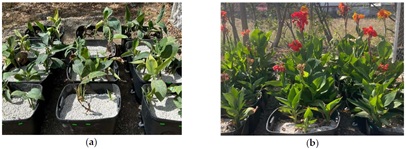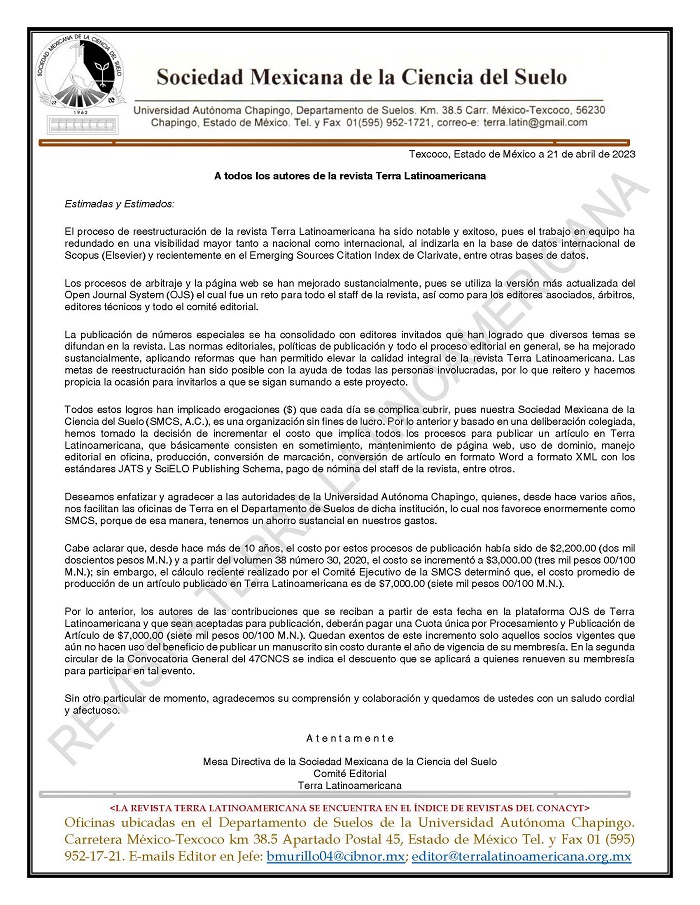Adaptation of Canna sp. to the Use of Stabilized Material as Substrate in Constructed Wetlands
DOI:
https://doi.org/10.28940/terralatinoamericana.v43i.1977Keywords:
bioremediation, landscape quality, ornamental plants, waste revaluationAbstract
The advantages of constructed wetlands, such as their low cost of construction and operation, as well as the contribution of ecosystem services, give them a high potential to be used in wastewater treatment in developing countries; the search for new substrates is one of the ways to optimize these systems. In this sense, aged refuse, which are wastes from closed landfill cells, could be potentially favorable for this application since the physicochemical characteristics that have been reported for
these materials can contribute to the removal of compounds present in wastewater, In addition the presence of microorganisms adapted to the assimilation of pollutants can contribute to increase the ef ficiency of the system. On the other hand, it has been demonstrated that aged refuses can contribute to plant development, which would allow the establishment of crops of commercial interest with greater requirements, such as ornamental plants. In this work, four mixtures of aged refuses and gravel (0/100 %, 25/75 %, 50/50 %, 75/25 %) were evaluated as substrate in subsurface wetlands with an ef fective operating volume of 45 liters planted with Canna sp. under a completely randomized design, which were carried out in triplicate. The results suggest that Canna sp. can develop adaptation mechanisms that allow it to survive in the operating conditions present in an artificial wetland; however, the presence and proportion of aged refuses positively influenced the plant development, significantly increasing biomass generation, flower production, and chlorophyll content; a response attributable to the nitrogen, phosphorus, and potassium content found in the aged refuses, as well as to its cation exchange capacity. However, proportions of aged refuse higher than 50 % negatively af fect the hydraulic behavior of the system.
Downloads
Publication Facts
Reviewer profiles N/A
Author statements
- Academic society
- Terra Latinoamericana
- Publisher
- Mexican Society of Soil Science, C.A.

















